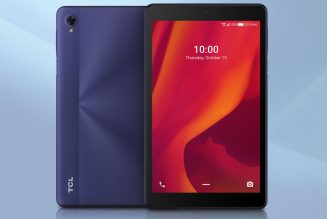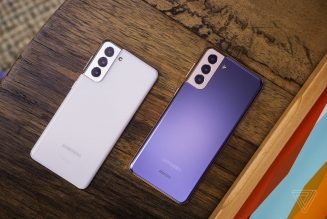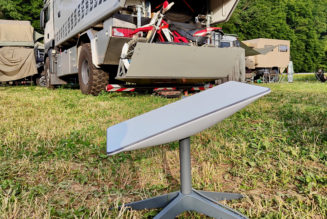The Ignite 3 looks like a sleek, modern smartwatch but acts like a tracker from five years ago.
I really wanted to like the Polar Ignite 3.
The $329.95 Ignite 3 was one of Polar’s more memorable launch announcements in recent years. With a shiny new OLED display, it looked like a Pixel Watch doppelgänger in photos. It also got new features like multiband GPS and Sleepwise, which helps you visualize when you’ll be at your best during the day — an “alertness forecast,” if you will. I’m not sure what exactly I was expecting, but I had a good experience with the original Ignite watch back in 2019. Sleeker design, better components, new features — on paper, it sounded like a formula for a successful update.
What I got was a watch that looked the part but couldn’t act it.
a]:shadow-highlight-franklin”>HOW WE RATE AND REVIEW PRODUCTS
a:hover]:shadow-highlight-franklin [&>a]:shadow-underline-black dark:[&>a:hover]:shadow-highlight-franklin dark:[&>a]:shadow-underline-white md:text-30″>Stylish but too slow for 2023
One of the first Polar watches I ever reviewed — the Polar M430 — was a blocky, hideously orange eyesore. After that, I was content if my Polar review units were a boring, nondescript black or white. But Polar watches have had a glow-up in recent years, and the 43mm Ignite 3 is, dare I say, sleek.
As I mentioned earlier, it looks like a Pixel Watch. That’s great since the Pixel Watch is widely regarded as a good-lookin’ smartwatch. The Ignite 3’s got the same vibe, with the main differences being a thinner stainless steel bezel and no digital crown. (The screen itself is also flatter.) It comes in multiple colors, but I went with purple since I’m in my purple era. Despite the bolder color, I never had much trouble with it matching the rest of my wardrobe.
I can’t remember the last time I tested a watch this thin and light, either. It’s easy to forget you’re even wearing it, as it’s only 9.5mm thick and weighs a mere 35g. I couldn’t feel the weight of the case when swinging my arms, it didn’t catch on my jacket sleeves, and it was comfy for sleep tracking.
:format(webp)/cdn.vox-cdn.com/uploads/chorus_asset/file/24357918/226471_Polar_Ignite_3_AKrales_0119.jpg)
Believe it or not, this is also Polar’s first OLED watch. It makes a huge difference. The 1.28-inch display gives the Ignite 3 a more modern look than the previous Ignite 2 and, frankly, every other Polar device. New watchfaces and widgets — like the weather widget pictured in the main image — look crisp, and colors are vibrant.
Polar also updated the UI.There’s no longer an unsightly flat tire at the bottom of the screen, and you can now add complications to watchfaces. Polar’s not reinventing the wheel, but it makes using the Ignite 3 more like using other touchscreen devices — a good choice if you’re looking to attract more casual users who might not have patience for a five-button system. Glove-wearing, button-loving athletes might protest, but the Ignite 3 wouldn’t be the best Polar device for that crowd anyway.
The problem is you can’t enjoy a pretty screen or a streamlined UI if the watch is slower than a sedated snail. It’s 2023, but this watch’s processor feels like it’s from 2016. You can see screens lag almost seconds behind your finger when swiping through menus. That made me less keen on interacting with the Ignite 3 beyond the basics — starting a workout, checking the odd notification, or accessing the quick settings menu. For example, editing the watchfaces to show the data I wanted was tedious enough that, once I settled on the one I liked, I never changed it. Normally, I’ll cycle through and edit at least three or four watchfaces depending on my mood.
The latest smartwatches are out here doing everything from making calls and paying for your meals to helping you control your smart home. It’s not unreasonable to expect a smartwatch to transition smoothly from one menu to the next. The fact that the Ignite 3 struggles here didn’t leave me with a whole lot of confidence that it wouldn’t faint like Scarlett O’Hara if I asked it to do too much.
:format(webp)/cdn.vox-cdn.com/uploads/chorus_asset/file/24357910/226471_Polar_Ignite_3_AKrales_0016.jpg)
a:hover]:shadow-highlight-franklin [&>a]:shadow-underline-black dark:[&>a:hover]:shadow-highlight-franklin dark:[&>a]:shadow-underline-white md:text-30″>Smart in name only
I’ve been thinking a lot lately as to what separates a smartwatch from a fitness tracker. To me, it boils down to how much it can do without your phone and if all of its smarts are geared toward fitness. By those criteria, the Ignite 3 is firmly a fitness tracker.
On the Ignite 3, you get the basics like notifications, alarms, and media control. That’s about it. Tons of fitness trackers these days support contactless payments. This does not. You also can’t take calls or quick reply to texts from the wrist. There’s no such thing as onboard music, either. There can’t be when you only have 32MB of storage. Meanwhile, you’ve only got Bluetooth 5.1 for connectivity. So if you wanted to leave your phone at home, the Ignite 3 can only track your GPS route. This is a fitness tracker that’s clearly built for someone who’s primarily going to classes or the gym — maybe a lap around the block.
Garmin and Polar are often mentioned in the same breath, but Garmin’s invested way more into building out smart capabilities. Polar is stuck playing catch-up, which isn’t exactly promising given how Apple and Samsung have started encroaching on Polar’s traditional turf with the Apple Watch Ultra and Samsung Galaxy Watch 5 Pro.
a:hover]:shadow-highlight-franklin [&>a]:shadow-underline-black dark:[&>a:hover]:shadow-highlight-franklin dark:[&>a]:shadow-underline-white md:text-30″>Battery and the always-on display
Fitness trackers generally trump smartwatches in battery life unless you enable power-guzzling always-on displays, and the Ignite 3 is no exception. It has an estimated five-day battery life without AOD and up to two days with it on. That bore out in my testing, though I actually managed to get around a week without AOD. (Probably because I was resting a lot while getting over a cold.) Battery life is highly dependent on your individual usage, but for me, the Ignite 3 lived up to its claims. In any case, Polar has an exhaustive chart of Ignite 3 battery life estimates based on varying settings that you can check out here.
:format(webp)/cdn.vox-cdn.com/uploads/chorus_asset/file/24357912/226471_Polar_Ignite_3_AKrales_0036.jpg)
Given a choice, I usually prefer having the AOD on. Not so much in this case. The Ignite 3’s AOD isn’t a dimmer version of your watchface. All of your data is blacked out, and all you can see is the time. That’s fine! You should be able to always see the time on your watch! But without any extra info, I didn’t feel it was worth trading off three extra days of battery.
a:hover]:shadow-highlight-franklin [&>a]:shadow-underline-black dark:[&>a:hover]:shadow-highlight-franklin dark:[&>a]:shadow-underline-white md:text-30″>An odd choice for multiband GPS
If the Ignite 3 isn’t the smartest tracker on the block, then at least the fitness features are a slam dunk, right? Not quite. Your mileage may vary with the Ignite 3. You’ll be fine if you primarily exercise indoors. This device won’t have issues tracking elliptical sessions, yoga classes, or treadmill walks and runs. Heart rate tracking was on par with my Apple Watch Ultra, Garmin Fenix 7S, and the Polar H10 chest strap. You’re all good for heart rate zone workouts.
But if you’re an outdoor runner or cyclist, might I suggest a different fitness tracker?
:format(webp)/cdn.vox-cdn.com/uploads/chorus_asset/file/24357917/226471_Polar_Ignite_3_AKrales_0094.jpg)
Going in, I had high hopes for the Ignite 3’s outdoor activity tracking. This is Polar’s first multiband GPS watch, so I expected better than average GPS data even if it didn’t exactly make a whole lot of sense to include it here. The whole point of multiband GPS is that it’s more accurate in challenging areas like cities and forests because the device is communicating with multiple satellite frequencies. That makes it a feature that most benefits outdoors enthusiasts, which is why Apple, Garmin, and Coros introduced the feature on their flagship rugged watches. There are some midrange options now, but those also target the same crowd. The Ignite 3 is a lifestyle tracker aimed at more casual users. It doesn’t add up.
And boy howdy, you sure can tell from the screenshots in the gallery above. I tested the Ignite 3 alongside the Apple Watch Ultra, Garmin Fenix 7S Sapphire Solar Edition, and the Runkeeper app on my iPhone 14 Pro Max — all of which also have multiband GPS. Now look at these two loops around a local lighthouse during a 6.75-mile run. My phone, the Ultra, and the Fenix 7S show pretty much the same thing, with slight variations. The lines are tight and stick close to the path I actually ran. The Ignite 3 has me zigzagging in the East River. This isn’t even the worst example.
These are the worst examples, from two separate runs along the same path:
I run this path all the time for GPS testing. It is a boring, reliable straight line right up until it curves around the aforementioned lighthouse. Sure, sometimes smartwatches and fitness trackers say I’m running in the water, but not like this. I can’t say it’s a fluke, either, because it happened multiple times on the same path, and no other device I wore had these issues. At first, I thought I had forgotten to enable the setting. Nope. The Ignite 3 has multiband GPS on by default. It’s just the watch.
a:hover]:shadow-highlight-franklin [&>a]:shadow-underline-black dark:[&>a:hover]:shadow-highlight-franklin dark:[&>a]:shadow-underline-white md:text-30″>Good training features, clunky app
Fitness watches tend to come with overloaded, overcomplicated phone apps. For me, Garmin Connect is the worst offender, but Polar Flow isn’t too far behind. Navigating the menus and figuring out all of the settings will take a hot second for newbies. On the bright side, the design is less cluttered than Garmin Connect’s, and the data is more visual, which helps. The main issue I have is that syncing can take forever.
Polar’s got great training features, particularly for recovery. Nightly Recharge measures your heart rate variation during sleep to gauge whether you should rest or challenge yourself in training. There’s also FitSpark, which recommends the type of exercise you should do on a given day. It’s also had sleep tracking with sleep stages for a long time now. You can also see neat insights — like cardio load and whether you’re burning fats versus carbs — though I’d take those with a grain of salt. None of these features are new to the Ignite 3, but they’re solid and available on multiple Polar devices if you choose to upgrade later.
The new health feature this time around is Sleepwise. You need five nights of sleep data from a given week for it to work. Once you’ve built up enough data, you’ll see a dinky little color-coded bar graph the next day that purportedly tells you when you’ll be most alert. It’ll also give you a “sleep gate,” or an optimal window of time to go to bed. I happen to also be trying out the Rise Science app, which does the exact same thing but better. The Rise app lets me view how naps and exercise impact my energy levels and also serves as a smart alarm. Sleepwise is a rudimentary visualization of your circadian rhythm and not much else.
a:hover]:shadow-highlight-franklin [&>a]:shadow-underline-black dark:[&>a:hover]:shadow-highlight-franklin dark:[&>a]:shadow-underline-white md:text-30″>Style over substance
When I see a nice-looking watch, I subconsciously expect it to work well. Logically, I know that’s not always the case. The Ignite 3 is proof enough of that. I wanted to like it, but the shiniest OLED and the sleekest design can’t make up for laggy performance and wonky GPS. A $330 fitness tracker shouldn’t perform like it’s stuck in the past. Especially not now, after a year when everyone elevated their smartwatch game.
:format(webp)/cdn.vox-cdn.com/uploads/chorus_asset/file/24357915/226471_Polar_Ignite_3_AKrales_0049.jpg)
The $279.99 Samsung Galaxy Watch 5, $249 Apple Watch SE, and $349.99 Pixel Watch all have the modern, sleek smartwatch feel that the Ignite 3 is going for. They run circles around the Ignite 3 in terms of overall smart features, health tracking, GPS performance, and processing power. Their fitness tracking abilities are more than adequate for casual users. The only thing the Ignite has over them is battery life — and even that advantage slips away if you want AOD.
I get wanting to shore up your appeal to a more casual lifestyle audience. But if you’re going to go simple, you’ve got to nail the execution because there’s nowhere to hide your mistakes. Otherwise, as with the Ignite 3, the flaws will be all you see.
a:hover]:shadow-highlight-franklin [&>a]:shadow-underline-black dark:[&>a:hover]:shadow-highlight-franklin dark:[&>a]:shadow-underline-white md:text-40 lg:-ml-100″>Agree to continue: Polar Ignite 3
Every smart device now requires you to agree to a series of terms and conditions before you can use it — contracts that no one actually reads. It’s impossible for us to read and analyze every single one of these agreements. But we’re going to start counting exactly how many times you have to hit “agree” to use devices when we review them since these are agreements most people don’t read and definitely can’t negotiate.
To use the Polar Ignite 3, you must pair it with an iPhone or Android smartphone. That includes the phone’s Terms of Service, privacy policy, and any other permissions you grant. You must also create a Polar Flow account to use the app.
By setting up the Polar Ignite 3, you’re agreeing to:
- Polar’s Privacy Notice, which includes its security and data collection / processing policies
- Polar’s Terms of Use
You must also grant the Polar Flow app certain phone permissions for notifications. Additionally, integrating with other services, like Strava, Apple Health Kit, or Komoot, also requires you to agree to those individual terms and policies.
Final tally: whatever your phone requires, plus two mandatory agreements. There are also optional phone permissions and third-party app integrations.









